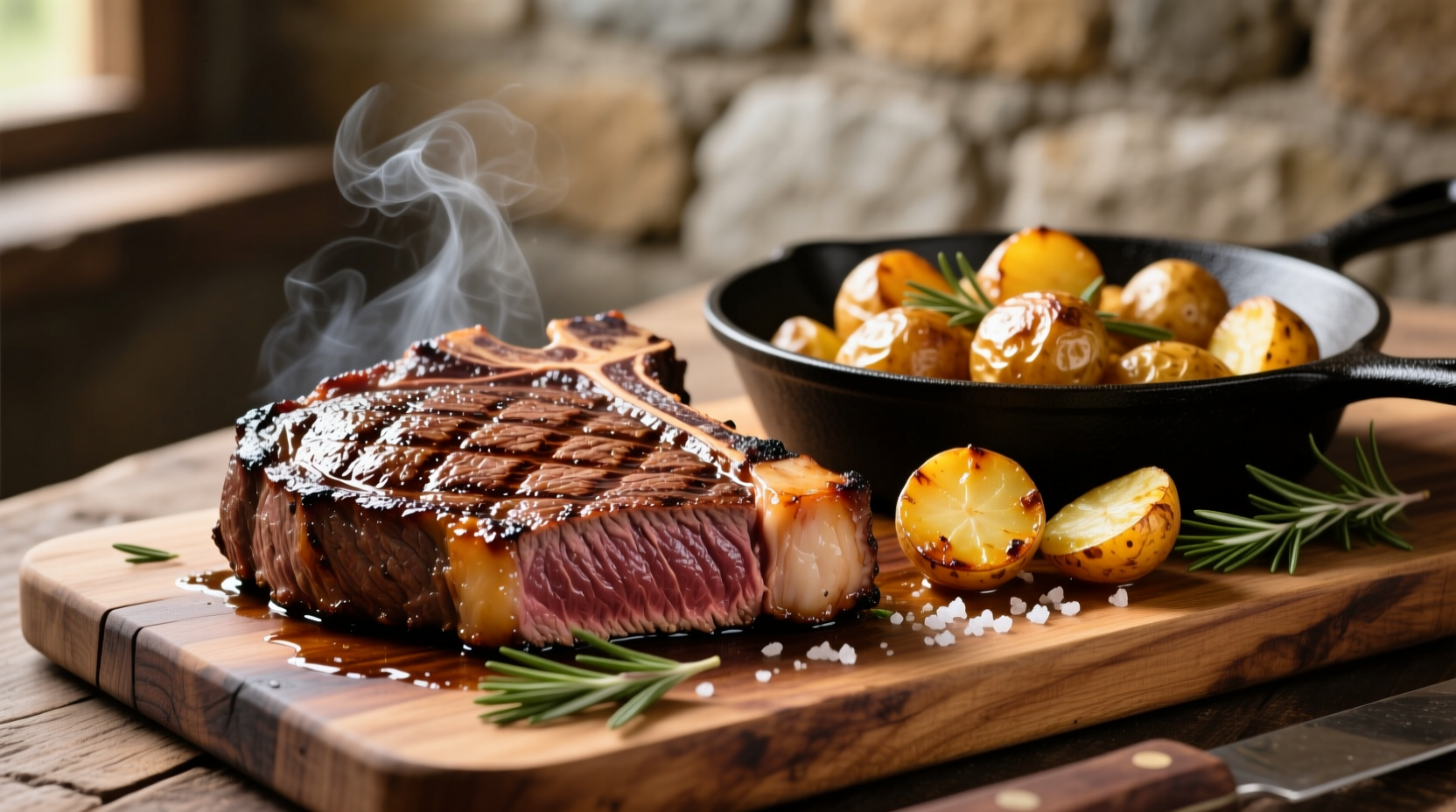The Foundation: Why Most Home Attempts Fail
Many home cooks struggle with steak and potatoes because they misunderstand the science behind proper cooking. The primary issues include improper temperature control, incorrect cut selection, and poor timing coordination between components. When steak hits the pan below 400°F (204°C), it steams rather than sears, creating gray, tough meat instead of that desirable caramelized crust. Similarly, potatoes cooked at wrong temperatures either burn externally while remaining raw inside or become soggy from excess moisture.
Professional kitchens solve these problems through precise temperature management and understanding of the Maillard reaction—the chemical process that creates complex flavors when proteins and sugars interact at high heat. Home cooks can replicate these results by focusing on three critical elements: surface dryness, oil temperature, and resting time.
Ingredient Selection: Building Blocks of Excellence
Choosing the right ingredients forms the foundation of exceptional steak and potatoes. Not all cuts perform equally in home cooking environments, and potato varieties react differently to heat.
| Steak Cut | Best Cooking Method | Thickness Recommendation | Home Cooking Suitability |
|---|---|---|---|
| Ribeye (12-14oz) | Pan-searing with reverse sear option | 1.5 inches | ★★★★★ |
| Filet Mignon | Pan-searing only | 1.5-2 inches | ★★★☆☆ |
| New York Strip | Pan-searing with reverse sear | 1.25 inches | ★★★★☆ |
| Flank Steak | High-heat sear with quick cook | 0.75 inches | ★★☆☆☆ |
For potatoes, select varieties based on your preferred texture outcome. Russet potatoes deliver the crispiest exterior and fluffiest interior when roasted, while Yukon Golds provide naturally buttery flavor with slightly less crispness. Avoid waxy potatoes like red potatoes for high-heat methods—they retain too much moisture for optimal crispness.

Preparation Essentials: The Critical Pre-Cooking Phase
Proper preparation separates good results from great ones. Begin seasoning your steak 45-60 minutes before cooking with coarse kosher salt (¼ teaspoon per pound)—this allows salt to penetrate the meat rather than just seasoning the surface. Pat the steak completely dry with paper towels immediately before cooking; surface moisture is the enemy of proper searing.
For potatoes, cut uniform ¾-inch cubes and soak in cold water for 30 minutes to remove excess starch. This critical step prevents potatoes from steaming in their own moisture during cooking. After soaking, thoroughly dry potatoes with a clean kitchen towel—wet potatoes won't crisp properly regardless of cooking temperature.
Cooking Techniques: Precision Execution
Master these professional methods adapted for home equipment:
Steak Perfection Method
For 1-1.5 inch thick cuts, use the reverse sear technique for foolproof results. Preheat oven to 275°F (135°C). Place steak on wire rack over baking sheet and cook until internal temperature reaches 10-15°F below desired doneness (115°F for medium-rare). This gentle heating ensures even cooking without gray bands. Then, heat 2 tablespoons of high-smoke point oil (avocado or grapeseed) in cast iron skillet until shimmering (400-450°F). Sear steak 60-90 seconds per side, adding butter, garlic, and herbs during the final 30 seconds.
Potato Crisping Method
After drying potatoes, toss with 1 tablespoon oil, ½ teaspoon salt, and optional rosemary. Spread in single layer on preheated baking sheet (oven preheated to 425°F/220°C). The preheated pan creates immediate sizzle contact for maximum crispness. Roast 35-40 minutes, flipping once at 20 minutes, until golden brown and fork-tender.
Timing Coordination Timeline
Successfully timing both components requires strategic planning. Follow this sequence for simultaneous completion:
- 60 minutes before cooking: Season steak and let sit at room temperature
- 45 minutes before cooking: Soak potatoes in cold water
- 30 minutes before cooking: Preheat oven to 275°F for steak reverse sear
- 15 minutes before cooking: Drain and dry potatoes thoroughly
- When steak reaches target temp minus 15°F: Increase oven to 425°F for potatoes
- During final steak sear: Transfer potatoes to oven if using pan method
Troubleshooting Guide: Fixing Common Issues
Even with careful planning, problems can occur. Here's how to rescue them:
- Overcooked steak: Slice thinly against the grain and serve with compound butter to restore moisture
- Undercooked potatoes: Return to oven at 450°F for 5-7 minutes while steak rests
- Soggy potato exterior: Broil for 2-3 minutes watching closely to achieve crispness
- Burning before proper sear: Reduce heat slightly and ensure pan isn't overcrowded
Remember that resting steak for 5-10 minutes after cooking allows juices to redistribute. Cutting too soon releases precious moisture onto your cutting board rather than staying in the meat.
Serving for Maximum Impact
Professional presentation elevates your home-cooked meal. Place potatoes slightly off-center on warm plates, then rest sliced steak at a 45-degree angle across the potatoes. Drizzle with any pan juices from the steak and add a small sprinkle of flaky sea salt for texture contrast. This simple arrangement creates visual interest while keeping components distinct yet complementary.
For sauce options, try a quick pan reduction: after removing steak, add ¼ cup beef broth to the hot pan, scraping up browned bits, then whisk in 1 tablespoon cold butter until emulsified. This technique, called deglazing, transforms leftover pan drippings into a restaurant-quality sauce without additional ingredients.











 浙公网安备
33010002000092号
浙公网安备
33010002000092号 浙B2-20120091-4
浙B2-20120091-4